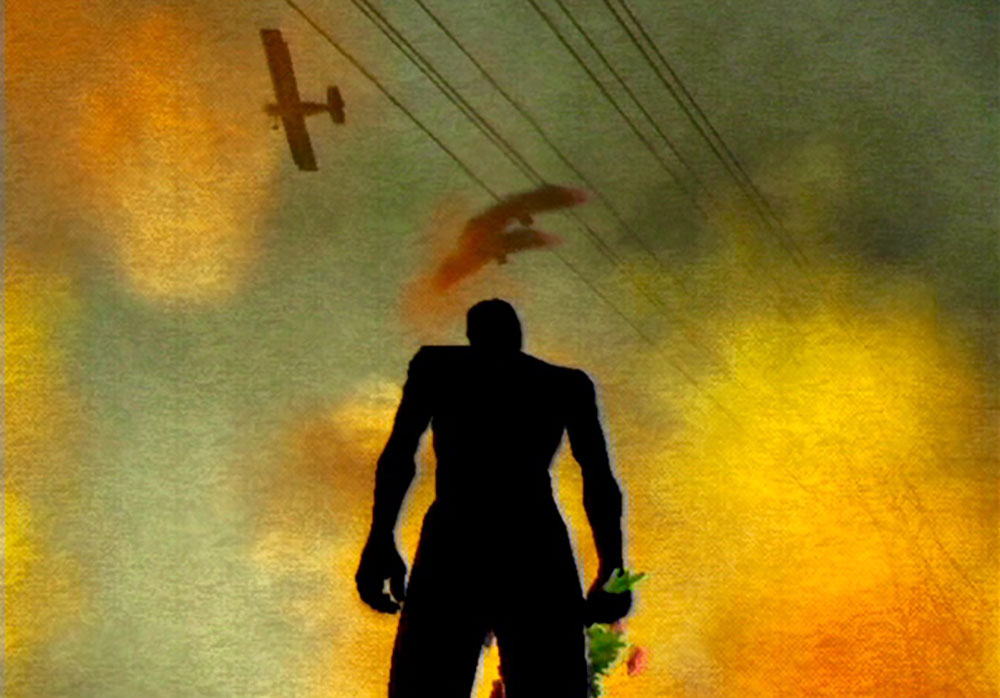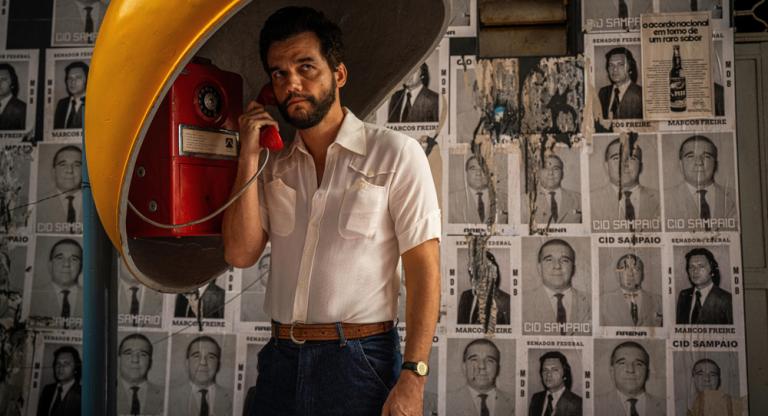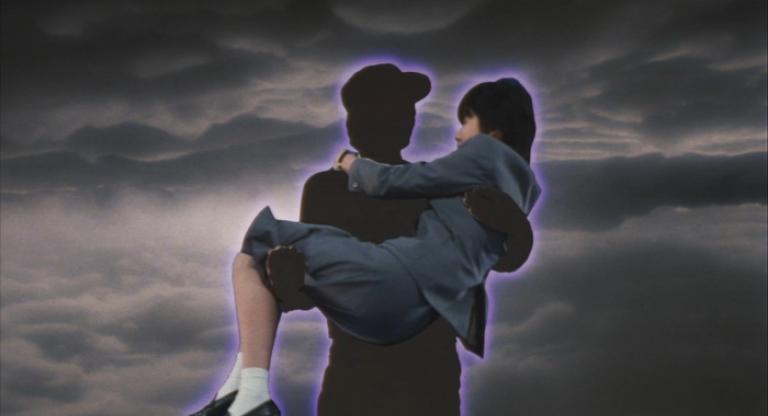“I just had a visitor here, a guy from Ecuador, and we had a show in my basement. I showed him a couple of films, and he was posing questions to get me talking like I am with you. He brought a woman with him, his girlfriend, and she asked me, so beautifully, “Have you ever had an out of the body experience?” And so that’s her way of saying that that’s what she had watching my films, and that’s really what I strive for in those works.” - Phil Solomon, 2018
The films of Phil Solomon represent one of the most original, striking, formally rigorous, and transcendental bodies of moving-image work to emerge from American experimental cinema in the past 50 years. By the time he retired from filmmaking in the mid-2010s, Solomon had become one of the most acclaimed and distinguished artists of his generation, with a profound impact and influence on a younger generation. His disparate activities find him alternately as a small-gauge journeyman, a master of the optical printer, an heir to Brakhage, a video-game connoisseur, and an installation virtuoso. He was also a beloved educator at the University of Colorado Boulder, who taught with a level of vigor and passion evidenced in the extensive list of titles screened in his Fall 2002 “Brakhage In His Time” course he taught.
In the early 1970s, Solomon was a pre-med student at SUNY Binghamton with a strong interest in New Hollywood fare. But after enrolling in Cinema 101 with Ken Jacobs, where he was exposed to Tony Conrad’s The Flicker (1966) on the first day of class, he found himself completely taken with this unorthodox form of expression (the mind-altering effects of free jazz, marijuana, and acid also helped some). In particular, one of his most formative experiences in learning “film language” came from guest lecturer Fred Camper’s shot-by-shot analysis of Brakhage’s Anticipation of the Night (1958). “We couldn’t even get past the first five or ten minutes,” Solomon later recalled. “There was so much to say.”
Like many of Brakhage’s films, Solomon’s are often difficult to fully parse in on a first viewing, requiring one to pick up on their subtle internal rhythms and wildly abstract compositions. Nocturne (1980/1989), whose grubby black-and-white imagery of repressed domestic existence recalls Brakhage’s Fire of Waters (1965), is so quickly paced that its compositions flash by in what feels like the blink of an eye. The myriad of carefully considered juxtapositions of different sources of illumination—lines of blindingly bright light emitted from several households, car headlights, lamp poles, and even the moon—might appear randomly assembled to an untrained eye. Yet, each shot serves to contrast the previous in minor yet considerable ways, via either movement—where someone walking right of the frame follows one of clouds moving westward—and sometimes in terms of luminosity, where an image shrouded in darkness comes after one practically burning with brightness. The unassuming What’s Out Tonight Is Lost (1983), one of Solomon’s earliest experiments with what Tom Gunning referred to as “chemical and optical alchemy” (the exact process of which still remains somewhat murky) is a cerebral and metaphysical exploration of fading memory that mixes home movies with newly produced footage, as if to suggest that, in the grand scheme of things, the two will inevitably become one and the same; that the passage of time renders all physical material into an identical decaying mass.
This same idea is explored with greater rigor in a staggering series of films made when Solomon’s parents were seriously ill—The Secret Garden (1988), The Exquisite Hour (1989), Remains To Be Seen (1989), and The Snowman (1995)—whose crackling, deep-fried textures convey a palpable sense of corporeal degeneration. Human bodies, like 16mm film stock, wither with age, and the memories of those people will become murky and illegible, likeSolomon’s chemically altered images. The soundtrack to Remains To Be Seen—including beeps and hissing from a mechanical ventilator and a single piece of spoken language: “It’s going to be alright,” accompanied by an angelic choir—register as the filmmaker making peace with the fact that all of these spoilages are simply the natural order of things. The final few minutes of The Secret Garden, which might be the most stunning of Solomon’s career, reworks bipacked variations of flowing water into an intense celestial contortion of luminous beams, a guiding force for all souls detached from their mortal appendages. The sensation of ascending into heaven is passed along to the viewer.
While Solomon is probably best known for his haptic 16mm films—including the first three titles in his Psalm tetralogy (1999–2013)—and his few collaborations with Brakhage, his mentor and fellow instructor at Colorado Boulder, his digital machinima work remains equally vital. After being diagnosed with an undisclosed hereditary disease in 1999, Solomon understandably wanted to mentally check-out for a bit. He bought a Playstation 2, along with Grand Theft Auto: Vice City—when asking for a good video game recommendation at Best Buy, he specifically requested something that wasn’t “anything fucking medieval;” ironic, as he would eventually employ footage from The Elder Scrolls V: Skyrim for Psalm IV: Valley of the Shadow (2013)—and went to town with the experimental ethnographer Mark LaPore, one of his closest friends. The duo would play a cheat-code riddled version of the game for hours on end. They would eventually make Crossroad (2005), a short dedicated to their ill colleague David Gatten that was shot on digital video, in which they essentially dick around in the game’s expansive open environment for a few minutes before moving on to the next mission.
When LaPore killed himself in 2005, Solomon decided to mourn his friend in much the same way he did his own parents; except this time, instead of utilizing the primordial muck of his earlier eulogies, the crudely animated world of GTA was called-upon instead. If Crossroads was a bit of a toss-off, then make no mistake about it: the haunting trilogy of films Solomon would dedicate to his late companion—Rehearsals for Retirement (2007), Last Days in a Lonely Place (2007), and Still Raining, Still Dreaming (2009)—are as aesthetically pronounced and emotionally fraught as anything he made with film stock. In Solomon’s version of Grand Theft Auto, the world is a barren and frigid place: nearly no humans populate a supposedly bustling metropolis, only a sole protagonist and the occasional vehicle like a passing plane in Rehearsals for Retirement. Here, the sterile, materialist nature of the digital is laid completely bare. While many experimental filmmakers had difficulty transferring their practice into a new medium, basically trying to jerry-rig old methods into a fresh apparatus, Solomon did the opposite—and in the process, ended up producing some of his most exceptional work.
“‘Lost and Found, You Still Remain There’: A Phil Solomon Retrospective” runs November 7–9 at Anthology Film Archives.



